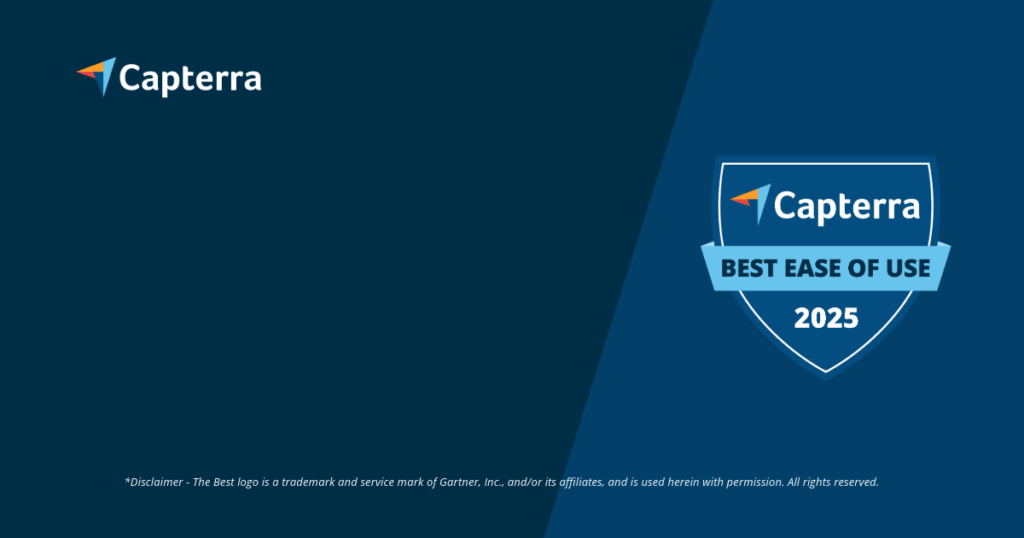Digital Transformation in Construction: Increasing Efficiency with Smart Helpers
We in the construction industry all know it: Skilled labor shortages, rising cost pressure, and increasingly complex projects challenge us daily and demand new solutions. This is where digital helpers on the construction site are no longer just a nice trend, but a real necessity to remain competitive and successfully execute construction projects. If you are also considering how to optimize your projects, then engaging with digital tools, meaning the topic of digital helpers on the construction site, is an absolutely right and important first step. We at Valoon GmbH understand the specific requirements of the construction industry from our own experience and are more than happy to support you in developing the right digital strategy for you. Let’s explore together how you can simplify your construction processes and sustainably increase your efficiency.
- Addressing industry challenges like skilled labor shortages and cost pressure.
- Increasing competitiveness through optimized construction projects.
- Improving communication and information flow on construction sites through digital helpers on the construction site.
- overcoming inefficient, often paper-based documentation processes.
The reality: Challenges on modern construction sites
Modern construction sites are complex ecosystems where countless trades must work hand in hand. One of the biggest hurdles we repeatedly see is the effective communication and seamless information flow – not only between the office and the construction site but also among all parties directly on site. Quickly, misunderstandings and information gaps lead to mistakes, frustrating delays, and unnecessary costs. Then there’s the often paper-based or outright inefficient documentation – who doesn’t know the notorious ‘chaos of notes’? It consumes valuable time and makes traceability unnecessarily difficult. Many of us also struggle with the increasing competitive pressure and the need to calculate and keep costs in check precisely. But this is exactly where digital helpers on the construction site comes into play to address these weaknesses and optimize our processes. The digital construction site is no longer a distant vision of the future but a reality for many.
What are “digital helpers” really?
What exactly do we mean by ‘digital helpers’? Well, we refer to a whole range of technologies that serve as digital helpers on the construction site tools to help us support and significantly improve construction processes. This starts with mobile apps for smartphones or tablets, goes through specialized construction software and extends to truly advanced solutions like Building Information Modeling (BIM), drones, sensors, or even robotics. The key aspect of all these tools is the added value: They provide more efficiency through automated processes, fewer errors (and thus lower costs), and a significant improvement in construction quality and transparency. Everyone involved in a construction project benefits from this: Project managers gain better oversight and control, tradespeople enjoy simplified data collection and communication, foremen benefit from optimized workflows, and architects and planners from more precise foundations and smoother collaboration. The use of these technologies is a truly important step towards the digitization of construction management..
Key benefits from using digital helpers
Here are some of the most important benefits you can achieve through the use of digital helpers on the construction site :
- Efficiency increase:Digital helpers on the construction site enable faster processes, reduce manual data entries, and minimize downtime. For example, the digital time tracking in construction can significantly reduce administrative effort.
- Cost reduction: With more precise planning, optimized resource utilization, and fewer errors, the total costs of a project decrease. Avoiding material waste through accurate calculation tools also contributes to this.
- Quality improvement: A seamless and cloud-based construction documentation, more precise execution through digital plans, and improved communication lead to higher construction quality and less rework.
Mobile Apps: Your digital toolbox for the construction site
The smartphone has become an indispensable part of our everyday life, hasn’t it? And even on the construction site, it is increasingly evolving into an essential tool. Today, there is a huge selection of mobile construction apps that provide digital helpers on the construction site solutions for a variety of tasks, turning smartphones or tablets into the digital Swiss Army knife for project managers, foremen, and tradespeople. These digital helpers on the construction site are designed to simplify our workflows directly on site, accelerate data collection, and improve communication among each other. Whether it’s time tracking, measurement, or defect documentation – nowadays, there are specialized apps for almost every use case as digital helpers on the construction site, making our daily work easier and increasing productivity. Thus, the mobile project management app building becomes the heart of a modern construction organization.
Categorization: Which app for which purpose?
The selection of construction apps can be overwhelming, can’t it? To keep track, it’s really sensible to sort them digital helpers on the construction site by application areas. For the precise work time recording and project assignment there are, for example, apps like Clockodo or TimeTrack that finally make manual timesheets obsolete. Digital logbooks like Vimcar or Driverslog Pro 2 take the mileage recording off our hands for accurate billing and project cost estimation. With measurement apps, such as Würth WDM or the Bosch Toolbox, we can digitally measure and create plans directly on site – reducing errors and saving valuable time. To network with partners and experts, there are apps like Handwerkerradar. Weather apps like RegenRadar provide us with real-time precipitation data for better daily planning. And who doesn’t know the quick digitization of paper documents? PDF scanners like CamScanner are worth their weight in gold. Knowledge databases like the ‘Building Elements’ of BG Bau give us access to important standards and safety regulations. Comprehensive construction apps like BauMaster, PlanRadar, or Capmo serve as central platforms for documentation, communication, and project control – they are true all-rounders among the digital helpers on the construction site.By the way, a good one has also been compiled by Bau-Master.
Selection criteria: What to look for in construction apps
But what should you consider when choosing the right app as digital helpers on the construction site for you and your team? At the top of the list for us is the user-friendliness and an intuitive operation. Because, let’s be honest: only if the software is easy to handle will it be genuinely accepted and used by the employees. Absolutely essential for use on construction sites is a robust offline functionality.We all know that a stable internet connection is not always available everywhere – data must therefore be able to be collected offline and later synchronized. Please also pay attention to data security and GDPR compliance, especially when processing personal data. The option to integrate with your existing systems (like ERP, CRM, or your construction software) is also super practical to avoid isolated solutions and ensure a smooth data flow. And of course, in the end, costs and pricing models also play a role. Many providers offer free trial periods – a great opportunity to find out if the respective digital helpers on the construction site really fits your specific needs.Digital construction file: Transparency and audit-proof document management
Document management – a topic that concerns all of us in construction and often gives us headaches, right? A well-maintained construction file is not only worth its weight in gold for internal organization and smooth project execution but also for our legal security and the traceability of decisions. However, we often know traditional, paper-based file management as tedious, non-transparent, and constantly at risk of losing important information. The introduction of a digital construction file, supported by clever digital helpers on the construction site, can really make a difference here. It transforms document management from the ground up and creates a central, accessible, and audit-proof information base. This is a truly important step towards the digital construction site..
- Creation of a central, digital, and accessible information base for all project participants.
- Ensuring transparency and audit-proof archiving for legal security.
- Overcoming the disadvantages of traditional, paper-based file management.
- Efficiency increase through structured documentation and automated workflows enabled by digital helpers on the construction site.
The importance of a central document storage
Imagine: A central digital document storage, often provided by digital helpers on the construction site, – this is like the heart of every efficient construction site management. It helps us finally get a grip on the dreaded ‘chaos of notes’ and ensures that all relevant documents such as construction plans, permits, records, and all correspondence are bundled and neatly structured in one place. This means fast and location-independent access to the latest information for all project participants – which greatly improves collaboration and reduces misunderstandings. Especially important is the audit-proof archiving.Every change to documents must be traceably logged so that we have a complete history ready in case of disputes or warranty claims. Such systems are truly indispensable digital helpers on the construction site, helping us not only save valuable time but also increase our legal security. A cloud-based construction documentation also offers us additional flexibility and security.
Solutions for digital document management
Fortunately, there are now various software solutions specifically developed for digital document management in our construction industry. Platforms like DocuWare, BauMaster, or Thinkproject truly offer extensive functions to organize, distribute, and archive construction documents. Often, these systems also allow integration with cloud storage solutions like Dropbox, Google Drive or OneDrive digital helpers on the construction site speziell für das digitale Dokumentenmanagement in unserer Baubranche entwickelt wurden. Plattformen wie DocuWare, BauMaster oder Thinkproject bieten da wirklich umfangreiche Funktionen, um Baudokumente zu organisieren, zu verteilen und zu archivieren. Oft ermöglichen diese Systeme auch die Integration von Cloud-Speichern wie Dropbox, Google Drive oder OneDrive, enabling us to simply continue using or expanding our existing storage structures. Another significant advantage of modern document management systems (DMS) is the ability to automate workflows. This allows us, for example, to digitally depict and significantly speed up approval processes for plans or invoices. When choosing the right DMS, we should of course pay attention to the specific requirements of our company – scalability, user-friendliness, and integration capability are important keywords here. These digital helpers on the construction site significantly contribute to professionalizing our project handling. Those who want deeper information can find valuable insights on digital construction files, for example.BIM visualization: Experience the construction site of the future today
Building Information Modeling, or BIM – this term is currently revolutionizing how we plan, execute, and manage construction projects. And believe me, it is far more than just a fancy 3D visualization. BIM is a method of connected planning in which all relevant building data is digitally captured, modeled, and used throughout the entire life cycle of a building. Thanks to BIM viewers and mobile applications, these complex data models are also accessible directly on our construction sites, transforming into valuable digital helpers on the construction site. The result? More precise execution, better coordination, and early error detection, which ultimately leads to higher quality buildings and more efficient processes. By the way: Artificial intelligence on construction sites can further refine such BIM data. BIM (Building Information Modeling): More than just 3D
BIM (Building Information Modeling): Mehr als nur 3D
The foundations of BIM lie in creating an intelligent, digital twin of the structure. This model contains not only geometric information but also data on materials, costs, schedules, and technical properties of the components. The benefits of BIM in construction are manifold: improved planning quality through collision checks, more accurate quantity determinations and cost calculations, optimized construction workflows, and transparent communication among all project participants. For use on the construction site, there are specialized BIM viewers for mobile devices like BIMx, Solibri Anywhere, or Dalux. These apps, as important digital helpers on the construction site, allow project managers and tradespeople to access the 3D models on-site, view details, and retrieve information. A central challenge of BIM is data interoperability between different software solutions. The open exchange format IFC (Industry Foundation Classes) plays a critical role here to ensure smooth data exchange and to establish BIM as an effective digital helpers on the construction site . More on the topic of and BIM can be found at digitalBAU.
Application examples: How BIM is changing the construction site
The application possibilities of BIM as digital helpers on the construction site are numerous and contribute significantly to increased efficiency. Through the early detection of planning errors and collisions between different trades in the digital model, costly rework and delays on the construction site can be avoided. The visualization of construction processes and assembly procedures in the 3D model helps better understand complex tasks and optimize execution. Additionally, BIM supports communication with all stakeholders by creating a common, understandable information basis. Project managers can, for example, use the model to assign tasks or document construction progress. Tradespeople can view details about the installation of components directly in the model. Thus, BIM becomes an indispensable digital helpers on the construction site, fostering collaboration and ensuring quality. The integration of BIM viewers into a mobile project management app building can further enhance the benefits.Automation and robotics: Efficiency leap through machine precision
Automation – a topic that is becoming increasingly present in our construction industry. It promises to take over monotonous, strenuous, or dangerous tasks while increasing precision and speed. Robotic applications, functioning as highly developed digital helpers on the construction site , are not yet everywhere in use, but they are already impressively showcasing their potential. Whether drilling robots, welding robots, or autonomous vehicles – this type of digital helpers on the construction site is rapidly evolving and will sustainably change our way of working on construction sites in the coming years. The important thing is: This development is not aimed at completely replacing us humans. Rather, it is about supporting us and relieving us from repetitive or physically demanding tasks so that we can focus on the more complex and value-adding activities.
The Fischer BauBot: Automated drilling and doweling
An impressive example of using robotics in construction is the . This robot was designed to automate drilling and doweling tasks on construction sites. Its operation is based on the integration of digital construction plans (BIM), which serve as the basis for the precise positioning of the drill holes. Equipped with sensors, the BauBot can detect deviations from the target specifications and adjust its work accordingly. If there is no BIM model available, the robot can use 3D scanning to create a point cloud of the environment and generate a model from it to detect obstacles and avoid collisions. The BauBot automatically changes drilling tools and has a built-in suction system to minimize dust emissions. All relevant data on the drilling and setting process are documented and stored in the BIM model, ensuring traceability. This digital helpers on the construction site not only increases productivity but also quality and safety in standard tasks.
More robotic applications and their potential in construction
In addition to the Fischer BauBot, there are other promising robotic applications for construction sites. This includes wall robots that can set bricks precisely and quickly, or welding robots that perform complex welding tasks in high quality. Also in logistics and material transport, autonomous vehicles are increasingly being used. The potential of these technologies as digital helpers on the construction site is enormous: higher productivity, improved quality, more safety, and relief for employees.. However, there are also limits and challenges, such as high acquisition costs, the need for specific qualifications for operation and maintenance, and adaptation to the often unstructured and dynamic conditions on construction sites. The ongoing development of this digital helpers on the construction site will inevitably have impacts on jobs and qualification requirements, with a focus on meaningful human-machine collaboration.
- Precision increase: Robots perform tasks with consistently high accuracy.
- Efficiency gain: Automated processes through digital helpers on the construction site often proceed faster and without fatigue.
- Safety improvement: Dangerous tasks can be taken over by machines.
IoT and sensors: Data-driven decisions for optimized construction processes
The Internet of Things (IoT) and the use of sensors – this may sound technical at first, but it opens up entirely new possibilities for us in construction! With this, we can capture and analyze data in real-time and make truly informed decisions. Imagine: Machines, tools, materials, and even components are connected to the internet. This creates intelligent systems that work for us like a vigilant eye and a precise measuring instrument. These digital helpers on the construction site continuously provide us with valuable information – whether about environmental conditions, material properties, machine states, or construction progress. By analyzing this data, we can not only optimize quality control and our processes but even predict potential problems before they lead to costly failures or delays. Here, the can further refine such BIM data. plays a key role in evaluating these vast amounts of data.
- Enabling informed, data-driven decisions through real-time data capture.
- Continuous monitoring of environmental conditions, material properties, and machine states.
- Optimization of quality control and proactive detection of potential problems through digital helpers on the construction site.
- Efficient progress monitoring and construction documentation using drones and 360° cameras.
Sensors for environmental conditions and material properties
A variety of sensors, as effective digital helpers on the construction site, are already in use on construction sites today to monitor important parameters. Concrete sensors, for example, measure the temperature and humidity in fresh concrete and provide information about its curing process. This enables optimized planning of formwork deadlines and ensures concrete quality.. Other sensors, like those integrated into the hard hats of WakeCap, capture location data of workers and can thus contribute to improving safety and efficiency. Monitoring environmental conditions such as temperature, humidity, or noise levels using sensors provides valuable data for construction site management. These digital helpers on the construction site enable real-time data analysis for proactive quality control and process optimization. Through predictive analytics, supported by digital helpers on the construction site, i.e., the prediction of events based on historical and current data, potential problems such as material fatigue or impending failures can be detected and avoided at an early stage.
Drones and 360° cameras: Automated progress monitoring and documentation
Drones and 360° cameras have established themselves as extremely useful digital helpers on the construction site für die Dokumentation und Überwachung des Baufortschritts etabliert. Regelmäßige Überflüge mit Drohnen, ausgestattet mit hochauflösenden Kameras, ermöglichen die Erstellung von detaillierten Luftbildern, Orthofotos und sogar 3D-Modellen des Geländes und der Bauwerke. Diese visuellen Daten bieten einen umfassenden Überblick über den aktuellen Stand der Arbeiten und erleichtern den Abgleich mit den Planungsdaten. 360°-Kameras, strategisch auf der Baustelle platziert oder bei Begehungen eingesetzt, liefern immersive Panoramabilder, die eine virtuelle Besichtigung des Projekts ermöglichen. Die Kombination dieser Aufnahmetechniken mit KI-basierter Bilderkennung eröffnet weitere Potenziale: So können beispielsweise can automatically detect construction defects, quantify quantities, or assess construction progress.This leads to a more efficient and transparent cloud-based construction documentation and significantly supports project management.Connected communication: Redefining collaboration on the construction site
Let’s be honest: Smooth communication and effective collaboration are the A and O for any successful construction project, aren’t they? Especially with decentralized teams, many different project participants, and the constant need for quick information exchange, digital communication platforms and tools are gaining importance as digital helpers on the construction site ever more. These digital helpers on the construction site help us bridge distances, facilitate the exchange of information and documents, and avoid misunderstandings from the outset. From established collaboration tools to cleverly using everyday messaging services – the opportunities to redefine our cooperation in construction are truly diverse and offer enormous potential for efficiency gains. A good mobile project management app building often also comes with direct communication functions.
Remote collaboration: The construction site in the home office?
The necessity for remote collaboration has increased significantly in recent years. Tools like Microsoft Teams, Zoom, or Google Meet are relevant not only for virtual meetings and video conferences in office life but also as digital helpers on the construction site for the construction industry. They enable, for example, digital construction meetings with external planners or clients, without all parties needing to be physically present. Furthermore, technologies like Augmented Reality (AR) and Virtual Reality (VR) open new opportunities for immersive construction site tours from afar. Experts can, for example, be virtually guided through the construction project to clarify specific questions or assess construction progress. Despite the advantages, there are also challenges in remote collaboration, such as ensuring a stable internet connection on the construction site and the necessity for clear communication rules and processes. These digital helpers on the construction site require an adapted way of working.
Integration of messaging services: Valo_on organizes your construction communication
Messaging services like WhatsApp or Telegram – who of us doesn’t use them daily in private life? Due to their simplicity and speed, they are increasingly used for professional agreements on the construction site. However, the big challenge is to transform this often unstructured communication into truly usable project data and document the information flow in an audit-proof manner. And this is precisely where we at Valoon GmbH come into play: Our software, an example of innovative digital helpers on the construction site, allows you to seamlessly integrate exactly these common messaging services into your project management. Imagine: Messages, photos, and voice memos sent from the construction site via WhatsApp can be automatically assigned to the correct projects, tasks allocated, and documented in the. Stellen Sie sich vor: Nachrichten, Fotos und Sprachmemos, die beispielsweise per WhatsApp von der Baustelle geschickt werden, können automatisch den richtigen Projekten zugeordnet, Aufgaben zugewiesen und im digital construction diary. This way, we transform everyday tools that everyone knows and uses into powerful digital helpers on the construction site – and all without your employees having to familiarize themselves with new, complex software. Of course, we ensure that the use is absolutely compliant with data protection regulations. Thus, you can optimally leverage the benefits of fast messenger communication for your projects because we channel the information overload for you and transform it into structured, valuable data.Digital construction site: Overcoming challenges, shaping the future.
The shift to the digital construction site is not a sprint, but rather a marathon – a continuous process that brings us many opportunities, but also specific challenges. The introduction of new technologies and thus new digital helpers on the construction site requires not only financial investments, that is clear. It also takes a change in mindset from all of us, including employees, and the willingness to adapt established work practices. Nevertheless, the path to comprehensive utilization of digital helpers on the construction site. is from our perspective indispensable if we want to remain competitive in the long term and fully leverage the potentials of digitization. Therefore, it’s essential to actively tackle the obstacles and use the exciting technological developments strategically for one’s own company. The digital construction site is a goal that we can achieve step by step.
Barriers and obstacles to digitization in construction
One of the biggest hurdles we often see in the introduction of digital helpers on the construction site. is employee acceptance. This may be due to a lack of digital competence or simply understandable concerns about change. Based on our experience, training and open, honest communication are key. Of course, the often high initial investment costs for hardware and software, as well as the sometimes complex implementation of new systems, can initially be daunting. That’s why it’s so important to take a close look at the return on investment (ROI) and to choose solutions that are digital helpers on the construction site not only scalable but also provide real value for us. We must not forget concerns about data protection and security risks, especially when it comes to sensitive project data and the use of cloud services. The selection of GDPR-compliant solutions and clear security policies is simply essential. Another hurdle to keep an eye on is . Although this is primarily discussed in the context of end users with mobility impairments, it is also an important consideration in software design for the diverse user groups on our construction sites.
Trends and developments: The future of the digital construction site
Development in the area of digital helpers on the construction site is advancing rapidly. An important trend is the increasing use of artificial intelligence (AI) and machine learning (ML) for analyzing large data sets, automating planning and decision-making processes, as well as for predictive maintenance. The availability of 5G networks and edge computing will accelerate data transmission on construction sites and further promote real-time applications. Another focus is on the use of digital technologies to promote sustainable construction and resource efficiency, for example through optimized material use or the digital collection of environmental data. The integration of different systems and platforms into a seamless digital value chain will also gain importance. The AI on construction sites will play an increasingly significant role.
- Artificial Intelligence (AI): Automated analysis and decision-making.
- 5G and Edge Computing: Faster data processing directly on site.
- Sustainability: Digital tools as digital helpers on the construction site for resource-efficient construction.
Digital helpers: Your key to project success on the construction site
The implementation of digital helpers on the construction site. is a critical step towards modernization and efficiency enhancement in the construction industry. From mobile apps to digital construction files to BIM and robotics – the technological possibilities for digital helpers on the construction site are diverse and offer solutions for almost every challenge in daily construction work. The benefits are clear: optimized processes, reduced costs, improved quality, and more transparent communication. It’s not about blindly implementing every available technology, but strategically selecting the tools that provide the greatest value for one’s company and specific projects. The digital helpers for construction sites is therefore not just a buzzword, but a concrete approach to future viability.
Summary of key benefits
The use of digital helpers on the construction site. leads to a significant increase in efficiency through accelerated processes and reduced manual tasks. More precise planning and execution, supported by digital tools, result in a considerable reduction in costs due to fewer errors, optimized material use, and lower rework efforts. The quality of construction execution benefits from seamless documentation, such as that provided by a digital construction diary and improved collaboration among all project participants. Last but not least, transparency is increased, leading to more informed decisions and better project control. These advantages make digital helpers on the construction site an indispensable part of modern construction projects.
Recommendations for construction companies and outlook
For us in the construction business, now is truly the time to actively seize the potentials of digitization. A good start is always an honest analysis of your current processes: Where could digital helpers on the construction site bring the greatest benefit? Educate yourself about available solutions, take advantage of trial phases, and – very importantly – involve your employees from the very beginning in the selection and implementation process. Because investing in training and promoting digital competencies is just as important as choosing the right technology. Development does not stand still; we will see even smarter and more interconnected systems. Companies that today set their course for digitization secure a decisive competitive advantage for the future. We at Valoon GmbH would be happy to accompany you on this journey. We help you transform everyday messenger communication into structured project data, significantly lowering the often-dreaded entry barriers to digitization. Because we are convinced: The future of construction is digital, and digital helpers on the construction site are your key to success. Do not hesitate and contact us today for personalized advice or a demonstration of our solutions. Let’s elevate your construction projects to the next level together!
What exactly are “digital helpers on the construction site” and how can they specifically assist my construction company?
Digital helpers are software, apps, or even hardware like sensors that optimize construction processes. For your construction company, this means: more efficient processes through automated data collection (e.g., via WhatsApp), improved communication between office and construction site, fewer errors and a seamless documentation, which ultimately saves costs and enhances quality.
Our field staff are not very tech-savvy. Are there digital helpers that are truly easy to use?
Yes, absolutely. Many modern digital helpers, like the solutions from Valoon, focus on this. They often integrate into already familiar tools like WhatsApp. The focus is on high user-friendliness and minimal training effort, so that even less tech-savvy employees can use them easily and team acceptance is high.
How can I ensure that the introduction of digital helpers does not lead to even more chaos due to various standalone solutions?
Look for solutions that offer good integration options , for example through APIs (interfaces) to your existing software (ERP, calculation). Platforms that consolidate various functions or allow seamless connection of everyday tools such as messengers help avoid standalone solutions and ensure a continuous flow of data.
What advantages does the integration of messengers like WhatsApp into professional construction software, as offered by Valoon, provide?
The integration of WhatsApp, as enabled by Valoon, converts unstructured chat messages, photos, and voice notes directly into usable project data. This means: no duplicate data entry, information is immediately assigned to the correct project and documented. Your employees use a familiar tool, and you still get structured data for your project management..
How can the success or ROI of digital helpers on the construction site be measured?
Success manifests in various ways: through time savings in administrative tasks (e.g., time tracking, report generation), reduction of errors and rework, lower material consumption due to more precise planning, faster project completion and an improved resolution of defects. Companies often report a time saving of up to 45 minutes per employee per day..
Are my data secure if I use cloud-based digital helpers on the construction site?
Reputable providers of cloud solutions place great emphasis on data security. Look for factors such as server locations in Germany or the EU, encryption technologies, and GDPR compliance. Valoon, for example, ensures data protection and data security in accordance with applicable regulations.
Can digital helpers also support compliance with documentation requirements and quality assurance?
Definitely. Digital helpers enable a seamless and audit-proof construction documentation, e.g., through digital construction diaries, photo documentation with timestamps, and automated reports. Checklists and standardized forms directly in the app help to meet quality standards and identify defects early..
What initial steps do you recommend for a construction company that wants to start with digital helpers?
Begin with an analysis of your current processes: Where are the greatest pain points? Then choose a specific area to start, such as digital time tracking or construction site communication. Involve your employees early on and use free trial phases to find the right solution like the one from Valoon that is easy to implement and quickly delivers value..








